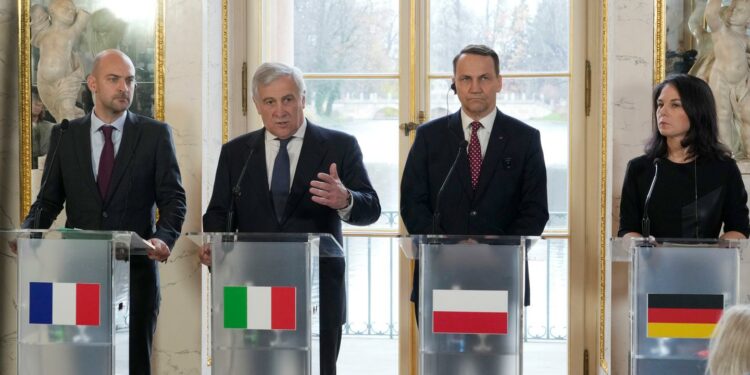Donald Trump has yet to reveal how he intends to handle the relationship between the US and the European Union. But no one in Brussels, Paris, Rome, Warsaw or Berlin imagines that it will emerge unscathed from the former president’s return to the White House on January 20, 2025. Setting aside Viktor Orban’s Hungary, Trump’s first term traumatized the 26 other member states, and the second promises to be even more difficult.
In 2016, the EU struggled to put up a united front against Trump. Since then, the far right has made headway on the Old Continent, and Giorgia Meloni and her post-fascist Fratelli d’Italia party have come to power in Italy. As for Germany and France, each in the midst of an economic and political crisis, they are weaker than ever on the European scene.
This time, the president-elect can count on a Republican majority in Congress and a Supreme Court that is firmly in his favor.
Of his plans for Europe, all that is known is what Trump promised during his campaign. He wants “peace” in Ukraine, even if it means ceding part of its territory to Russia. He expects the 27 member states to pay for their security and no longer rely on the US to guarantee it. On the economic front, he has one obsession: to reduce the US trade deficit, which, as far as the EU is concerned, stood at almost €160 billion by 2023.
Avoiding the worst
Trump therefore intends to impose new tariffs of 10% on European imports and is particularly targeting German cars, which, in his opinion, are selling too well in his country. The creator of the “Make America Great Again” slogan also wants to surtax Chinese imports by 60%, which would push China to dump its industrial overcapacity on the Old Continent, already in the midst of an economic stall.
Read more Subscribers only As Trump returns, Europe’s unity is tested: ‘We’re in a boat that’s going to weather a huge storm’
While waiting to learn more about Trump’s intentions, the Europeans are preparing for all possible scenarios. There is one situation that would allow them to avoid the worst. “If Trump understands that the US too has a lot to lose from a trade war with Europe, he will prefer to enter into a transactional approach with the Europeans” before enacting his campaign promises, explained a European diplomat. An increase in tariffs would certainly cost the EU between 0.5 and 1.5 points of gross domestic product growth, but it would also generate inflation on the other side of the Atlantic.
The EU needs to “engage, look at common interests, then negotiate,” explained Ursula von der Leyen on November 8 in Budapest. The Commission’s president even made an overture, with her proposition: “We still get a lot of LNG from Russia and why not replace it by American LNG, which is cheaper for us and brings down our energy prices.”
You have 66.27% of this article left to read. The rest is for subscribers only.
Source link : http://www.bing.com/news/apiclick.aspx?ref=FexRss&aid=&tid=673fa24af6674b25915a591accfcea46&url=https%3A%2F%2Fwww.lemonde.fr%2Fen%2Finternational%2Farticle%2F2024%2F11%2F21%2Fthe-eu-s-precarious-plan-ahead-of-trump-s-return-to-the-white-house_6733629_4.html&c=16004666509963017061&mkt=de-de
Author :
Publish date : 2024-11-21 12:00:00
Copyright for syndicated content belongs to the linked Source.



